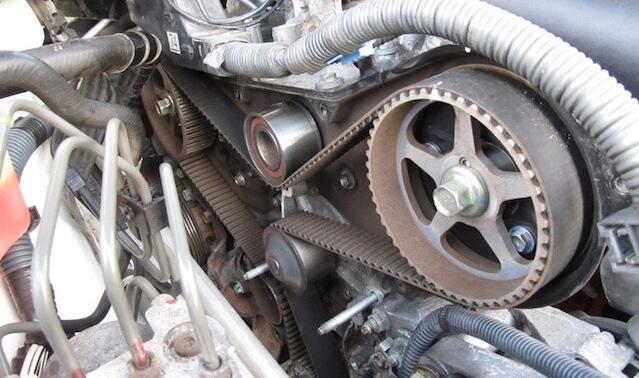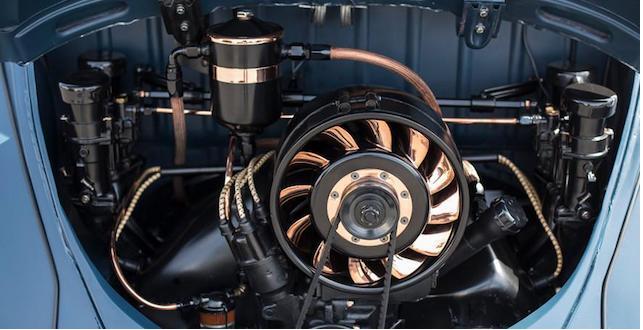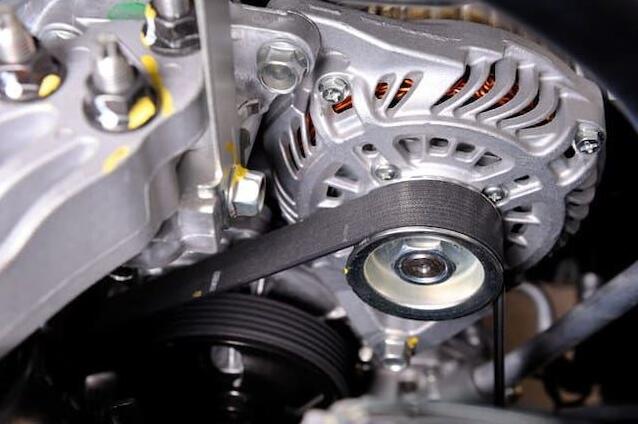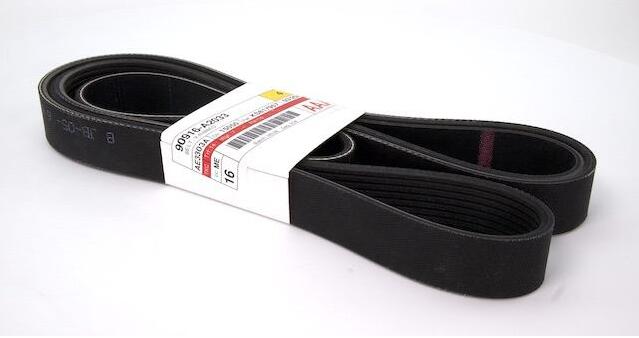All different types of belts in a typical engine
The belt is a simple component, but it plays an important role in the operation of the engine. In short, the belt provides power for a component (or group of components) in the engine.
Your engine has several belts. The number of belts your engine has depends on:
a.Your engine’s age
b.The design of the engine
Let’s talk about some of the most common belts found in engines.
1.Timing Belts

If you look at the front of the engine under the timing cover, you will find the toothed belt in some cases (although in most current vehicles, the belt is replaced by a chain). It is connected to the crankshaft and camshaft by several pulleys. Many years ago, the synchronous belt was also known as Gilmore drive belt, which has two functions. It powers the camshaft of the engine and synchronizes it completely with the crankshaft. This ensures that the valve opens and closes at the correct time. This is why it is called synchronous belt. It timing the valve mechanism.
The timing belt is usually damaged after driving 90K miles. Some synchronous belts can travel 110K miles. The service time of the water pump is roughly the same. It is always wise to replace the timing belt with the water pump. It is recommended to replace the water pump, even if the components operate normally. The pump is likely to fail before the next timing belt wear. This article explains why it is a good idea to replace the timing belt and water pump together. If you decide to do this work yourself, this article has some good suggestions that can help your work go smoothly.
2.Fan Belts

The cooling system needs a belt drive. In some engines, the serpentine belt provides power. In other engines, the fan belt supplies power. It can provide power for the following components in the cooling system:
Water pump
Air conditioning
By powering the cooling system, a functioning fan belt does the following:
a.Cools the radiator
b.Circulates coolant through the engine
If the fan belt breaks, the engine will no longer cool. This will cause the engine to overheat, resulting in expensive maintenance costs. Therefore, it is a good idea to check the fan belt during the routine inspection.
3.Alternator Belts

If the serpentine belt does not supply power to the alternator, the engine has an alternator belt. This is a small belt that only supplies power to the alternator. According to the design of the engine, the alternator belt can also provide power for the power steering pump. Without the alternator belt, the battery will not remain charged.
4.Serpentine Belts

In the past, engines have many belts to provide power for various components. For example, older engines may have several v-belts. V-belts are belts with deep grooves similar to the letter V. The invention of the serpentine belt changed this point. The serpentine belt has two different names: accessory belt and drive belt. The belt is long and runs through several pulleys. This is why it is called serpentine belt.
You can find the serpentine belt at the front or side of the engine. All serpentine belts are equipped with ribs to increase the contact surface with drive and driven pulleys. This helps the belt keep in contact with the pulley and transmit more power. The crankshaft rotates the serpentine belt. When the serpentine belt rotates, it provides power for all engine accessories, including:
a.Power steering pump
b.Water pump
c.Alternator
d.Air conditioning
The serpentine belt usually lasts for 60K-100K miles. However, it is advisable to include serpentine belt in daily inspection. The serpentine belt may crack, wear or even break at an early stage. When this happens, its driven accessories will stop running and the vehicle will need to be towed.
How has the belt changed over the years
Over the years, all belts have evolved. Sometimes they evolve with engines. At other times, they have evolved to provide better performance and longevity. Some of the biggest changes we have seen over the years include:
a.Serpentine belts are much longer and wider than older V belts
b.Improved material quality lets belts last much longer
c.A narrow, deep V-belt design evolved into a wide, flat belt with teeth
d.Several V belts on older engines have been combined into one serpentine belt on newer engines
Today, the belts are better and more durable than ever.





















